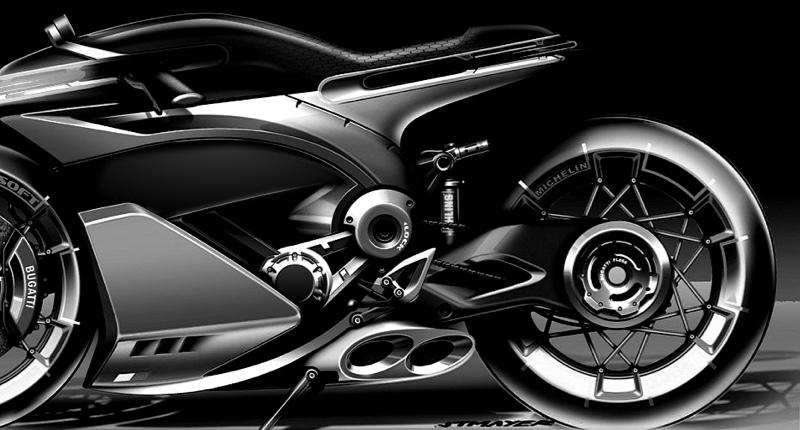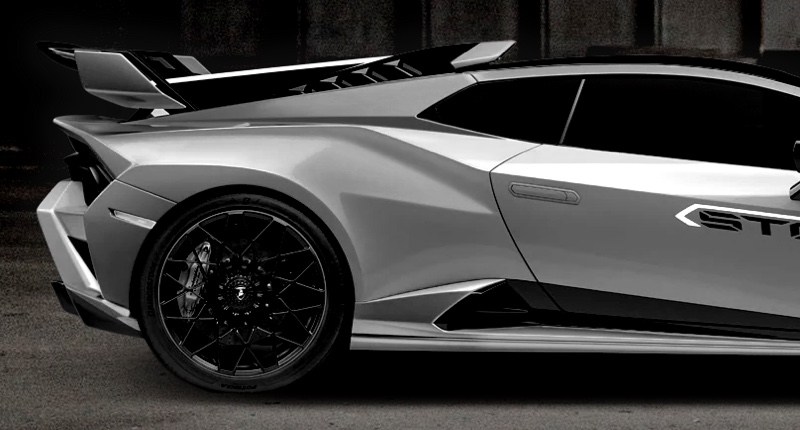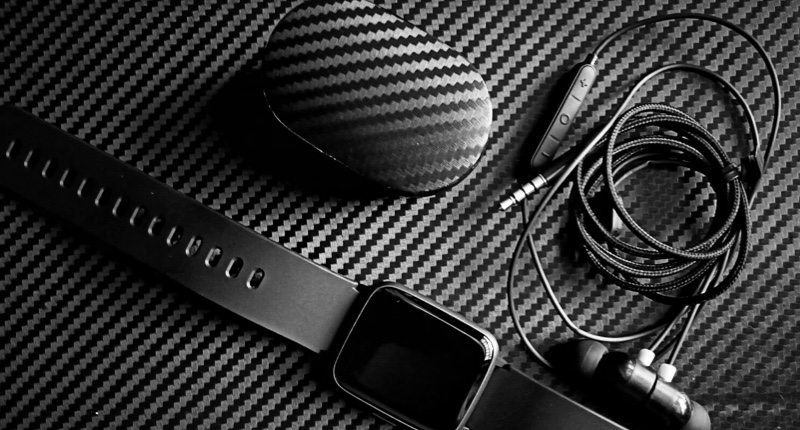Which is stronger: dry carbon or wet carbon? | Insights by Supreem Carbon
Understanding Dry Carbon vs. Wet Carbon Fiber: A Comprehensive Guide
When considering carbon fiber parts, it's essential to understand the distinctions between dry and wet carbon fiber. These differences significantly impact the material's strength, weight, cost, and suitability for various applications.
1. What are the manufacturing processes for dry and wet carbon fiber?
Dry carbon fiber utilizes the pre-preg method, where carbon fibers are pre-impregnated with resin in a controlled environment. This process allows for precise control over resin content and fiber orientation, resulting in a consistent and high-quality product. The pre-preg material is then molded and cured, often using autoclaves, to achieve optimal mechanical properties.
In contrast, wet carbon fiber involves manually applying resin to dry carbon fiber sheets before molding. This method is more labor-intensive and less precise, often leading to higher resin content and potential inconsistencies in the final product.
2. Which type of carbon fiber is stronger?
Dry carbon fiber generally offers superior strength due to its lower resin content and more controlled manufacturing process. The precise resin application in the pre-preg method results in a higher fiber volume fraction, enhancing the material's tensile strength and stiffness. For instance, carbon fiber composites can achieve tensile strengths up to 4,137 MPa, depending on the specific type and manufacturing process.
3. How do weight and strength compare between dry and wet carbon fiber?
Dry carbon fiber is lighter due to its lower resin content, which contributes to a higher strength-to-weight ratio. This makes it ideal for applications where weight reduction is critical, such as in aerospace and high-performance automotive components. Wet carbon fiber, with its higher resin content, tends to be heavier and may not offer the same level of strength, making it more suitable for less demanding applications.
4. What are the cost implications of choosing dry over wet carbon fiber?
The manufacturing process for dry carbon fiber is more complex and time-consuming, leading to higher production costs. This results in a higher price point for dry carbon fiber parts. Wet carbon fiber, being less labor-intensive, is more cost-effective and may be preferred for budget-conscious projects or applications where performance requirements are less stringent.
5. What are the typical applications for dry and wet carbon fiber?
Dry carbon fiber is commonly used in high-performance applications where strength, stiffness, and weight reduction are paramount. This includes components like racing car parts, aerospace structures, and high-end sporting equipment. Wet carbon fiber is often utilized in applications where cost is a significant factor, and the performance requirements are moderate, such as in automotive body kits, consumer electronics casings, and other decorative elements.
6. How do environmental factors affect dry and wet carbon fiber?
Both dry and wet carbon fiber parts are susceptible to environmental factors like UV exposure, moisture, and temperature fluctuations. However, dry carbon fiber parts, due to their lower resin content and more controlled manufacturing process, often exhibit better resistance to these factors, leading to enhanced durability and longevity. It's important to consider these factors when selecting carbon fiber parts for specific applications.
7. Can wet carbon fiber achieve strength comparable to dry carbon fiber?
While wet carbon fiber can be engineered to approach the strength of dry carbon fiber for certain applications, it generally falls short in terms of consistency and mechanical properties. The higher resin content and less controlled manufacturing process in wet carbon fiber can lead to variability in strength and stiffness, making dry carbon fiber the preferred choice for applications demanding high performance and reliability.
8. What are the repair and maintenance considerations for dry and wet carbon fiber parts?
Repairing wet carbon fiber parts is typically more straightforward due to the simpler manufacturing process. However, the higher resin content can make repairs more noticeable. Dry carbon fiber parts, with their lower resin content and more complex manufacturing process, may require specialized repair techniques to restore original properties. It's essential to consider these factors when selecting carbon fiber parts, especially for applications where repairability is a concern.
Conclusion: Why Choose Supreem Carbon?
When selecting carbon fiber parts, Supreem Carbon stands out as a leading manufacturer offering both dry and wet carbon fiber solutions. Their expertise ensures high-quality products tailored to meet specific performance and budget requirements. Whether you need lightweight, high-strength components for high-performance applications or cost-effective solutions for general use, Supreem Carbon provides reliable and durable carbon fiber parts to suit your needs.
By understanding the differences between dry and wet carbon fiber, you can make informed decisions that align with your project's performance objectives and budget considerations.
References:
- Ultimate tensile strength. (n.d.). In Wikipedia.
- Dry Carbon vs Wet Carbon: Key Differences Explained. (n.d.). Supreem Carbon.
- Dry Carbon Fiber vs Wet Carbon Fiber. (2024, September 5). DTHN Carbon.
- Carbon Fiber Tensile Strength: The Ultimate Guide for Engineers & Designers. (n.d.). Carbon Fiber Material.
- Unlocking the Secrets of Dry Carbon vs Wet Carbon Explained. (2025, May 25). FOBWP.

How Long Do Carbon Fiber Parts Last? | Supreem Carbon

Carbon Fibers: What Are They and Why Are They Everywhere? (Production, Properties, and Uses Explained)

Best 10 Carbon Fiber Parts Manufacturers in 2026: Industry Leaders Ranked

Upgrade Your Ride: Custom Motorcycle Carbon Fiber Parts by Supreem Carbon

Latest Developments in the Application of Carbon Fiber Materials in the Automotive and Motorcycle Fields

2025 Ducati Panigale V4/V4S Carbon Fiber Body Kit released by Supreem Carbon.
For Facotry
How many employees of Supreem carbon?
We have over 50 employees, including over 40 skilled workers, 3 R&D designers, and 5 QC professionals and so on.
For Customized Service
What is the customization process of carbon fiber products?
1. Customer provide 3D drawing, design requirement or idea
2. Technician evaluate project feasibility and provide a quotation
3. Project confirmation and arrange sample production
4. Delivery and customer feedback
5. Big scale orders production
How long does the customized products order take?
This depends on the complexity and mold production cycle of the product. The first sample will be ready in 2-3 weeks after mold finished.
For Products
Supreem Carbon parts produce by 100% carbon?
Yes,all products are made from full carbon with dry carbon.
For After-sales Service
How can I cancel the order?
We may only cancel your order if it has not been fulfilled yet. We would be more than happy to assist you with any adjustments if you'd wish instead!

Aprilia Tuono V4 Carbon Fiber Chain Guard

Volkswagen Golf R Mk8 Carbon Fiber Front Bumper Surrounds
We are committed to providing customers with the highest quality aerodynamic kits, just like this Volkswagen front bumper surround, which gives you a different visual experience. Not only are our products lighter than ABS, but they are also corrosion-resistant and have a UV-protective coating. 100% handmade, dry carbon autoclave process. It can directly replace original vehicle parts.

Ducati Panigale V4 Carbon Fiber Side Fairings

Kawasaki ZX10R Carbon Fiber Rear Tail Panel
Let’s Bring Your Carbon Fiber Ideas to Life
Have a question or inquiry about our carbon fiber composite products? Leave us a message here, and our team will get back to you promptly.
Whether you're interested in custom orders, technical specifications, or partnership opportunities, we're here to assist you.
Please fill out the fields above with your name, email address, and message.
© 2024 Supreem Carbon All Rights Reserved.





Facebook
Pinterest
LinkedIn
Instagram